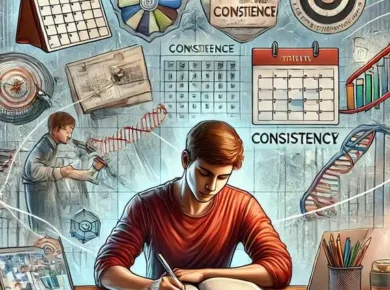What Leaders Can Learn from Pilots, Athletes, and Soldiers
Leadership is not only about managing teams. It is about managing yourself.
And some of the best lessons on discipline, focus, and decision-making
do not always come from business books. They come from pilots who fly
through storms, athletes who push past their limits, and soldiers who
operate under life-changing pressure.
These professions live in high-stakes environments. They cannot delay
decisions. They cannot escape responsibility. They cannot blame others.
Their training makes them calm, sharp, and reliable. Leaders can learn
a lot from them.
1. What Leaders Learn from Pilots
A. The Power of Checklists
Pilots never rely on memory alone. Before every flight, they use
checklists for everything — engines, navigation, weather, safety,
communication, and more. Even the most experienced pilots follow them.
This habit removes guesswork and reduces mistakes.
Leadership lesson: Create repeatable systems. Do not depend on memory.
B. Staying Calm Under Pressure
A pilot may face storms, low visibility, turbulence, or technical issues.
But they stay calm. Their training teaches them to control emotions
before controlling the aircraft.
Leadership lesson: When pressure rises, a leader must be the calmest person in the room.
C. Clear and Precise Communication
Pilots communicate in short, simple messages. No long speeches. No
confusion. Clarity keeps everyone safe.
Leadership lesson: Communicate briefly, clearly, and with purpose.
2. What Leaders Learn from Athletes
A. Consistency Is the Real Winning Formula
Athletes improve not by one big effort but by showing up every day.
Some days they feel strong. Some days they feel tired. But they train
anyway. That consistency creates champions.
Leadership lesson: Show up with discipline even when motivation is low.
B. The Importance of Recovery
Athletes do not train non-stop. They rest, sleep well, maintain nutrition,
and recover. Without recovery, performance drops.
Leadership lesson: Leaders must take breaks to think clearly and avoid burnout.
C. Learning from Failure
Athletes lose games, miss shots, and face injuries. But they review,
learn, adjust, and return stronger.
Leadership lesson: Treat failures as feedback, not as disasters.
3. What Leaders Learn from Soldiers
A. Teamwork Under Extreme Pressure
Soldiers do not operate alone. They move, fight, and survive as one unit.
Everyone trusts each other. Their life depends on it.
Leadership lesson: Build trust so your team performs even under pressure.
B. Mission First, Ego Last
Soldiers are trained to think about the mission before personal credit.
The team comes before the individual.
Leadership lesson: Leadership is about service, not ego.
C. Adaptability in Uncertain Situations
Every mission changes on the ground. Soldiers must adapt quickly.
Rigid thinking fails. Flexible thinking wins.
Leadership lesson: Adapt fast. Plans change. Your mindset must not freeze.
4. The Common Thread: Discipline
Pilots, athletes, and soldiers share one habit — discipline.
They do not wait for motivation. They do not look for excuses.
They follow routines even when no one is watching.
Leaders who build discipline gain better control of time, emotions,
and decisions.
5. How Leaders Can Apply These Lessons
A. Build Daily Rituals Like an Athlete
Start with small habits: reading, planning, thinking, or learning.
Small routines create big outcomes.
B. Use Checklists Like a Pilot
Create systems for meetings, reviews, feedback, hiring, and communication.
This reduces confusion and increases efficiency.
C. Build a Mission-Driven Team Like a Soldier
Make goals clear. Make roles clear. Encourage trust.
Teams win when everyone knows why their work matters.
Conclusion
The world needs leaders who stay calm like pilots, train like athletes,
and commit like soldiers. When you combine these qualities,
you lead with clarity, strength, discipline, and confidence.
Great leadership is not learned in a boardroom. It is learned from
those who deal with real pressure every day — in the sky, on the field,
and on the battlefield.










